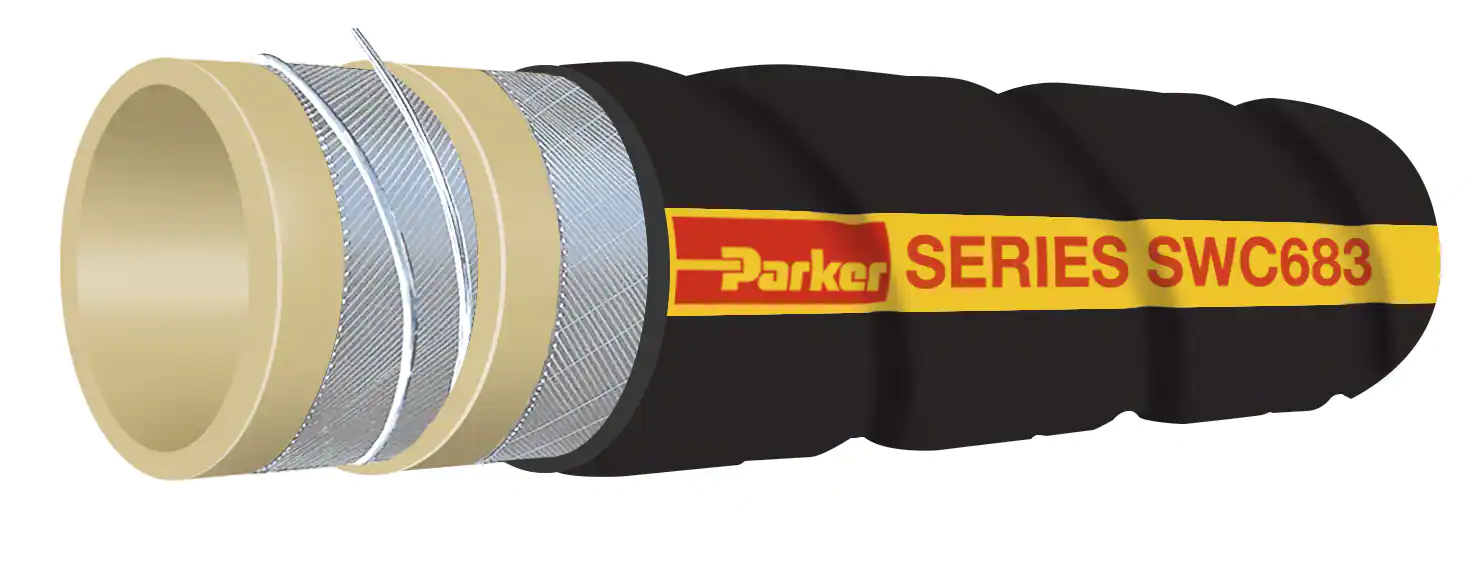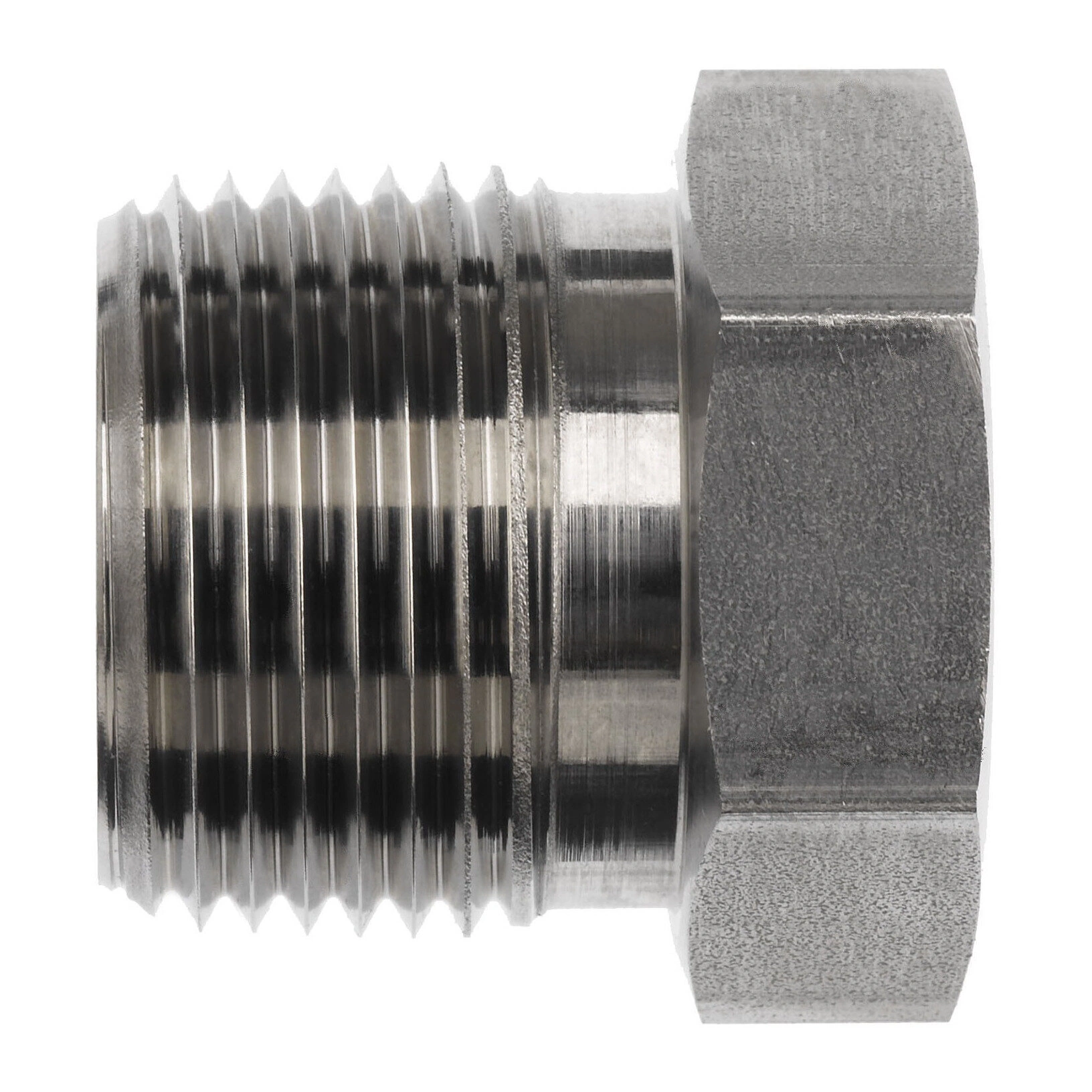
Selecting the Right Chemical Hose
SELECTING THE RIGHT CHEMICAL HOSE

With the extensive list of chemicals used in industry, it is crucially important to select the right chemical hose for your application. Applications that utilize chemicals call for extra precautions and safety measures. This includes storage, installation, usage, and replacement safeguards. Not only do applications that utilize chemical hose frequently require more intensive specifications, but they also demand a higher focus on safety during use and installation.
WHAT ARE THE CLASSIFICATIONS OF HOSE?
Chemical hoses are among the most important hoses to make sure you correctly identify the proper construction … and get it right the first time. Not only is it important for safety reasons, but it also impacts the durability and life of the hose. One of the major factors you’ll find when inspecting the classifications of chemical hose is tube construction. Here are the most common you will come across in the category of chemical hose tubes:
TUBE CONSTRUCTION
- UHMW: Translucent ultra-high molecular weight polyethylene (also called UHMWPE)
- Applications:
- Acid, chemicals solvents
- In-plant and storage tank transfer
- Delivery, transport
- Translucent Nylon
- Applications
- Lacquers, light chemicals, paints, solvents, thinners
- Connector, mixing, transfer service
- XLPE: Modified cross-linked polyethylene (also called MXLPE)
- Applications:
- Acid, chemicals, solvents
- In-plant tank transfer
- Delivery, transport
- Nitrile:
- Applications:
- Fertilizers, pesticides
- Agriculture, commercial and residential sprayers
- Petroleum Products
- EPDM:
- Applications:
- Anhydrous ammonia
- In-plant and tank transfer, transport and delivery, fertilizer dispensing
- Agriculture
- Synthetic Rubber
- Applications:
- Acid, chemicals, solvents
- In-plant tank transfer
- Delivery, transport

COVER CONSTRUCTION
The cover’s job is to protect the reinforcement from degradation. It must be chemically, thermally, and physically resistant to the environment it will live in. You will also find similar cover options, such as nitrile, EPDM, and synthetic rubber, with the addition of chloroprene and PVC, which can be an important consideration for certain applications, such as jobs that may require submersion of the hose assembly.

REINFORCEMENT
- Multiple textile plies with dual wire helix
- Full suction
- Discharge
- Static grounded hose
- Multiple aramid plies
- Discharge
- PVC external helix
- Visually inspected products
- To see media flow through the hose
- External elements (such as rain) can flow around the hose
- External helix
- Abrasion resistance
CORRUGATED VS. NON-CORRUGATED
When transferring gasses or liquids under pressure, you may want to spec in a hose with a corrugated cover. Corrugated covers will also offer greater flexibility and have higher torsion resistance. Braided lines will have more durability but be less flexible, and they allow for improved heat dissipation and flow.
CHEMICAL HOSE CERTIFICATION & RECERTIFICATION
Chemical hose certification and recertification can be a common practice for chemical hose assemblies. These certify that the hose is free of defects (within your definition) and functioning correctly on a specific date. They act as seals of approvals given by a qualified hose professional. You can request a certification for a new hose, or even recertifications at time intervals for or hose usage intervals (every three months for example). There is no industry standard for certifications, and you can determine what’s important for you: Pressure proof tests, visual inspections, conductivity or electrical, material certifications, etc. Hoses can be tagged to indicate last certification and when the next is required.
OTHER CONSIDERATIONS
There are some unique considerations when speccing in a chemical hose. Some hose, such as hose for brewery applications or food transfer hose applications will require that a hose has approval by the FDA (Food & Drug Administration). These hoses are made of chemicals that will not be harmful to people and are safe for consumption, meaning the tube will not be imparted on the material going through.
For example, if you remember the rubbery taste when drinking from the garden hose as a kid; that won’t happen with FDA approved material.
Applications such as dry powder chemical require static dissipative tubes, which mitigate static electricity to prevent explosion or arcs of electricity. Similarly, hose assemblies can be fitted with static grounding wires, which allow the electricity build up to flow from one end of the hose to another. Some hoses will have one or the other, and a few unique specs can have both. Speak with the Pros at TCH to find out which is best for your application to make sure you stay safe and productive.

WHAT HOSE MATERIAL IS THE MOST CHEMICALLY RESISTANT?
Referring to the chemical compatibility chart or contacting the team at TCH should be your first move when choosing the proper chemical hose for your applications. As you’ll notice in the chart, there is an excess of chemicals for consideration, as well as tube materials that will all handle a different array than the next. Some examples of the most common tube materials for chemical applications are:
UHMW is the most resistant to most chemicals. This is a common choice when looking at hoses suitable for chemical applications.
APPLICATIONS
Some common uses for chemical hoses include In-plant and storage tank transfer, delivery of acids, chemicals and solvents, abrasive solutions, paints, thinners, DEF fill and suction, and applications that require FDA approval. For more unique applications, or if you’re unsure what hose is right for the job, contact the Pros at TCH industries.
WHAT CHEMICALS ARE ON THE REACH LIST?
The REACH Annex, also known as the REACH authorization list, contains a list of substances subject to authorization under EU REACH regulation. REACH stands for:
- Registration: Chemical producers are required to register safety data for all chemicals produced.
- Evaluation: Experts from member states and the European Agency evaluate safety data for higher volume chemicals and other chemicals of concern.
- Authorization: Chemicals that are “substances of very high concern” (SVHC) are to be phased out and replaced with safer alternative chemicals.
- Restriction of Chemicals: Chemicals may be completely banned, or some uses of the chemicals can be restricted.
Below is the list of REACH restricted compounds and substances. Keep in mind, there is a larger SVHC list of substances that are not yet restricted.
1-methyl-2-pyrrolidone (NMP)
1,1-Dichloroethene
1,1,1,2-Tetrachloroethane
1,1,2-Trichloroethane
1,1,2,2-Tetrachloroethane
1,4-Dichlorobenzene
2-(2-butoxyethoxy)ethanol (DEGBE)
2-(2-methoxyethoxy)ethanol (DEGME)
2-naphthylamine and salts
4-Aminobiphenyl xenylamine and salts
4-Nitrobiphenyl
Acrylamide
Ammonium and compounds: nitrates, polysulphides, sulphide, hydrogen sulphides,
inorganic salts
Arsenic and compounds
Asbestos fibers
Azocolourants and Azodyes
Benzene
Benzidine and salts
Bis(pentabromophenyl)ether (decaBDE)
Bisphenol A
Bromoacetic acid esters: Butyl bromoacetate, Propyl bromoacetate, Ethyl
bromoacetate, Methyl bromoacetate
Cadmium and compounds
Chloroethene and Chloroethylene (Vinyl chloride)
Chloroform
Chromium VI and compounds
CMR substances in textiles
Coal tars: low-temp oils, alkalines, acids, extracts, phenols, distillates; anthracene,
creosote, naphthalene oils
Cyclohexane
Di-µ-oxo-di-n-butylstanniohydroxyborane / Dibutyltin hydrogen borate C8H19BO3Sn
(DBB)
Dichloromethane
Dimethylfumarate (DMF)
Diphenylether, octabromo derivative C12H2Br8O
Directive 1999/45/EC dangerous liquids
EC 1272/2008 Annex VI Part 3 carcinogens, mutagens, and reprotoxins per
category 1A, 1B (Table 3.1) or 1, 2 (Table 3.2)
Flammable gases (Cat 1,2), liquids (Cat 1,2,3), solids (Cat 1,2) that in water emit
flamable gases (Cat 1,2,3) of pyrophoric liquids, solids (Cat 1)
Hexachloroethane
Lead and compounds
Mercury and compounds
Methanol
Methylenediphenyl diisocyanate (MDI)
Monomethyl -tetrachlorodiphenyl methane (Ugilec 141)
Monomethyl-dibromo-diphenyl methane bromobenzylbromotoluene, mixture of
isomers (DBBT)
Monomethyl-dichloro-diphenyl methane (Ugilec 121/21)
Nickel and compounds
Nonylphenol C6H4(OH)C9H19 and Nonylphenol ethoxylates
Nonylphenol ethoxylates (NPE) (C2H4O)nC15H24O
Octamethylcyclotetrasiloxane (D4), Decamethylcyclopentasiloxane (D5)
Organostannic compounds
Pentachloroethane
Pentachlorophenol and salts, esters
Perfluorooctanoic acid (PFOA) and salts
Phenylmercury: 2-ethylhexanoate, acetate, neodecanoate, octanoate, propionate
Phthalates: 1,2-Benzenedicarboxylic acid, di-C8-10-branched alkyl esters, C9-rich,
1,2-Benzenedicarboxylic acid, di-C9-11-branched alkyl esters, C10-rich, Di-isononyl phthalate (DINP), Di-isodecyl phthalate (DIDP), Di-n-octyl phthalate (DNOP)
Phthalates: Dibutyl phthalate (DBP), Benzyl butyl phthalate (BBP), Bis
(2-ethylhexyl) phthalate (DEHP)
Polybromobiphenyls, Polybrominatedbiphenyls (PBB)
Polychlorinated terphenyls (PCTs)
Polycyclic-aromatic hydrocarbons (PAHs): Benzo[a]pyrene (BaP), Benzo[e]pyrene
(BeP), Benzo[a]anthracene (BaA), Chrysen (CHR), Benzo[b]fluoranthene (BbFA),
Benzo[j]fluoranthene (BjFA), Benzo[k]fluoranthene (BkFA), Dibenzo[a,h]anthracene
(DBAhA)
Soap bark powder (Quillaja saponaria) and saponine derivatives
Toluene
Trichlorobenzene
Tris (2,3 dibromopropyl) phosphate
Tris(aziridinyl) phosphinoxide
WHERE SHOULD CHEMICALS BE STORED?
When dealing with hazardous chemicals, OSHA (Occupational Safety and Health Administration) has a few requirements to make sure store chemicals are handled safely, refer to OSHA for a complete listing of rules and regulations. First, let’s take a look at some examples of hazardous materials:
- Explosives
- Gas
- Flammable liquids
- Flammable solids
- Corrosive substances
OSHA’s legal requirements for storing chemicals are as followings:
- Employees must be trained and have a written plan to work with chemicals.
- Chemicals must be accompanied by a Safety Data Sheet.
- Safety data sheets must be readily available.
OSHA recommends for workers to following these basic steps when storing chemicals:
- Keep storage areas free of clutter, explosives, and flammable conditions.
- Prevent chemical storage conditions that may encourage rats or pests.
- Place stored materials at least six feet from hoistways and at least 10 feet from exterior walls.
- Separate chemicals that cannot be stored together.
We Are Hosers.
Our focus and obsession is the distribution, fabrication, and manufacturing of hose assemblies for industry and hose related products. Founded nearly 40 years ago, we are proudly owned and operated by the same family. Our manufacturing partners are some of the biggest and best names: Eaton, Parker, Dixon Valve, Hose Master, Brennan, Hannay Reels, and many others.
In short, we are a customer-centric hose company filled with happy professionals who can help you meet all your hose related needs.










